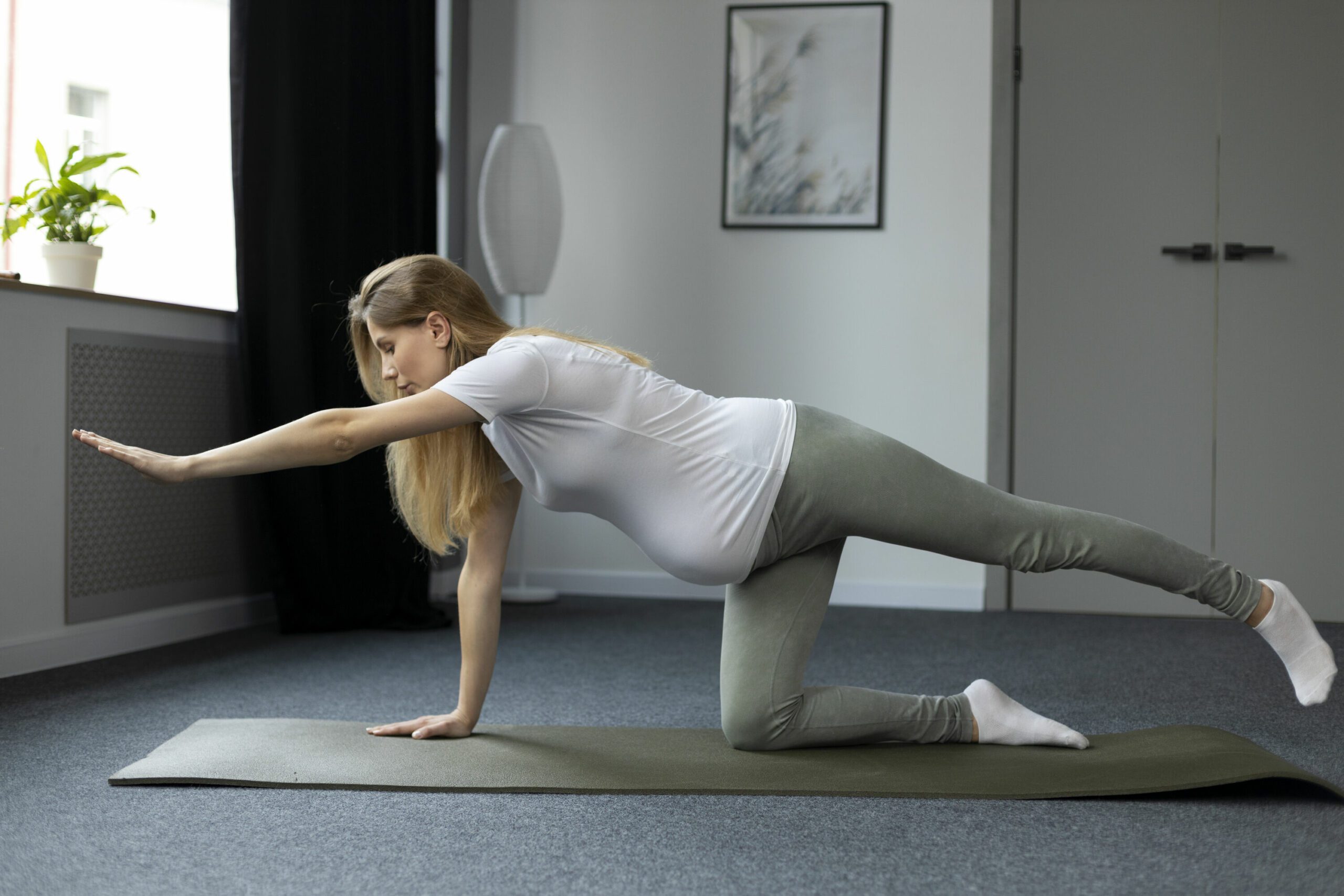If you’re pregnant or have recently had a baby, there are several things you should and shouldn’t do when it comes to working out. Here we look at some of these in closer detail so that you can avoid doing anything that could cause you or your baby harm.
Things To Do When Training Before Giving Birth
When you’re pregnant, it’s important to focus on other objectives instead of performance. Pregnancy is not a time to be trying to beat your personal best! Instead, you should be concentrating on improving your productivity, physical capacity and sense of overall well-being.
You should aim do work out sufficiently that you feel good about yourself and feel that you’ve achieved without feeling completely exhausted. Typically, this will often be about 20 minutes if you’re undertaking moderate level activities, aiming for a maximum of 3 or 4 on the RPE scale.
If the exercise that you’re doing feels good, you’re probably not pushing yourself too hard, although applying common sense is very important when it comes to regulating your exercise and listening to what your body is telling you.
Some common sense things to be aware of include:
- Making sure that you don’t overheat while you’re working out.
- Staying properly hydrated before, during, and after exercise.
- Taking sufficient rest periods to recuperate in between workouts and individual exercises.
- Wearing loose and comfortable clothing that is also breathable.
- Eating regularly and healthily in between workout sessions to fuel your performance.
- Taking note if you feel any discomfort while exercising and stopping your workout if you’re in any pain at all.
- Avoiding exercising if the conditions are too humid or hot.
Exercise Positions
It’s important to keep your positions in mind when you’re working out through pregnancy. Although lying on your back to perform exercises is safe during the first trimester, it should be avoided after 12 weeks since it puts extra pressure on your vena cava and restricts the blood circulation to your heart. This is very dangerous not only for you but also for your baby.
Aerobics During Pregnancy
If you don’t usually work out, you shouldn’t start during pregnancy. However, if you usually exercise regularly, you can continue exercising as long as your doctor is in agreement and you feel in good health.
If you’re going to do aerobic workouts in pregnancy, you should aim for between 3 and 5 sessions per week. Your heartrate that you should aim for will differ depending on your age.
Younger than 20 – 140 to 155 bpm
20-29 – 135 to 150 bpm
30-39 – 130 to 145 bpm
Over 40 – 125 to 140 bpm
You should take care to keep your cardiovascular exercise to low impact workouts only. Around 20 or 30 minutes of cycling, walking, low-impact aerobics or swimming would be ideal. When it comes to using equipment at the gym you’ll probably find it challenging to use the rowing machine or cycle as your pregnancy progresses, and using a cross trainer should be avoided during the later stages.
Resistance Training In Pregnancy
If you’re planning to do resistance training while pregnant, it’s advisable to stick to just two or three workout sessions per week, doing 15 to 20 reps with a low weight. A couple of sets for each exercise and between 8 and 10 exercises in the circuit format should be sufficient for most women. While pelvic floor exercises can be very beneficial, you should only do crunches and sit ups during your first trimester.
It’s also extremely important to perform all workouts on a base that is stable, avoiding using Swiss balls or other similar equipment. Maintaining the right posture during exercising is particularly important when you’re pregnant and you should minimise isometric work.
Lifting weights over your head should also be advised, since this raises your blood pressure – something that may already be increased during pregnancy and which can put both you and your baby at risk.
Flexibility Training In Pregnancy
If you’re planning to do flexibility training while pregnant, it’s advisable to only do these exercises between 2 and 3 times weekly. Make sure you only feel mild discomfort and hold positions for no longer than 10 seconds.
Your warm-up exercises should use dynamic controlled movements that mobilise your joints. You should do all stretching from a base that is stable, and take care to change and rise between movements very slowly so you don’t become dizzy. Remember that your joints become more flexible during pregnancy since the body releases relaxin, so avoid developmental stretching since this could cause unwanted hypermobility.
Exercise During Each Trimester
During your first trimester of pregnancy, you can carry on doing aerobic activities (as long as you were already doing them before you became pregnant) so long as you feel comfortable.
Once you enter your second trimester it’s advisable to change to low-impact activities like aqua classes, cross-trainers, and walking. At this point, you should consume about 150 extra calories each day that you exercise due to insulin resistance.
In your third trimester, you can still carry on doing low-impact exercises like swimming and walking, but reduce the length of time that you exercise to no more than 20 minutes while increasing your calorie intake to about 300 calories.
So long as you monitor your blood pressure and fatigue levels, you can carry on resistance training. During your first trimester, training can be added in to offset the postural adaptations you’ll need to take in the future. Once you reach the second trimester and certainly the third, your changing body will eventually dictate the equipment that you can use. In your third trimester, you should certainly avoid any overhead work, holding your breath, or lying down while exercising.
You can continue flexibility training during your first trimester as normal. During your second and third trimesters, static maintenance-based training for dynamic flexibility is very beneficial.
Once your baby is born, you can make a slow return to working out normally, taking care not to put too much strain on your body as it returns to its pre-pregnancy state.






